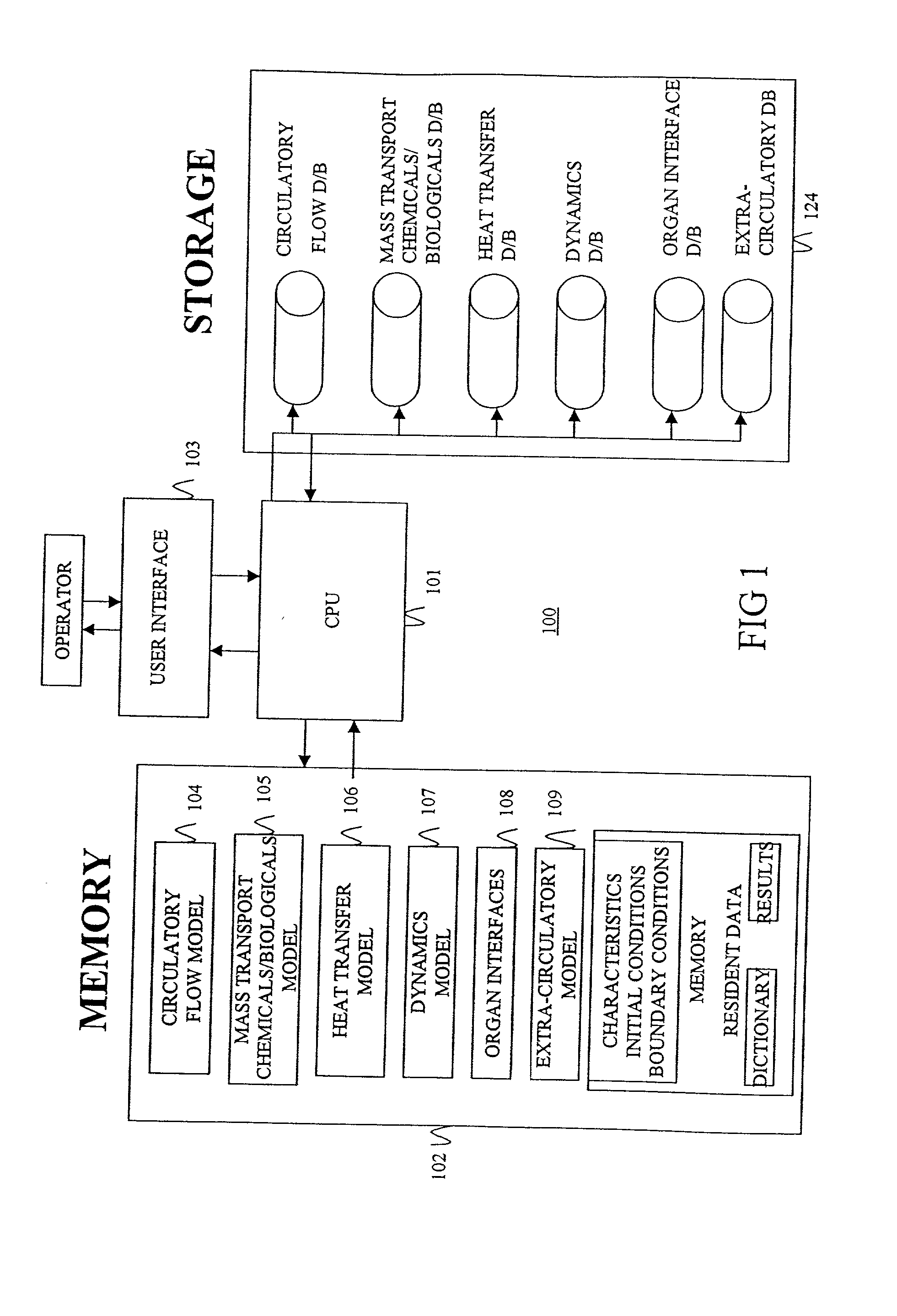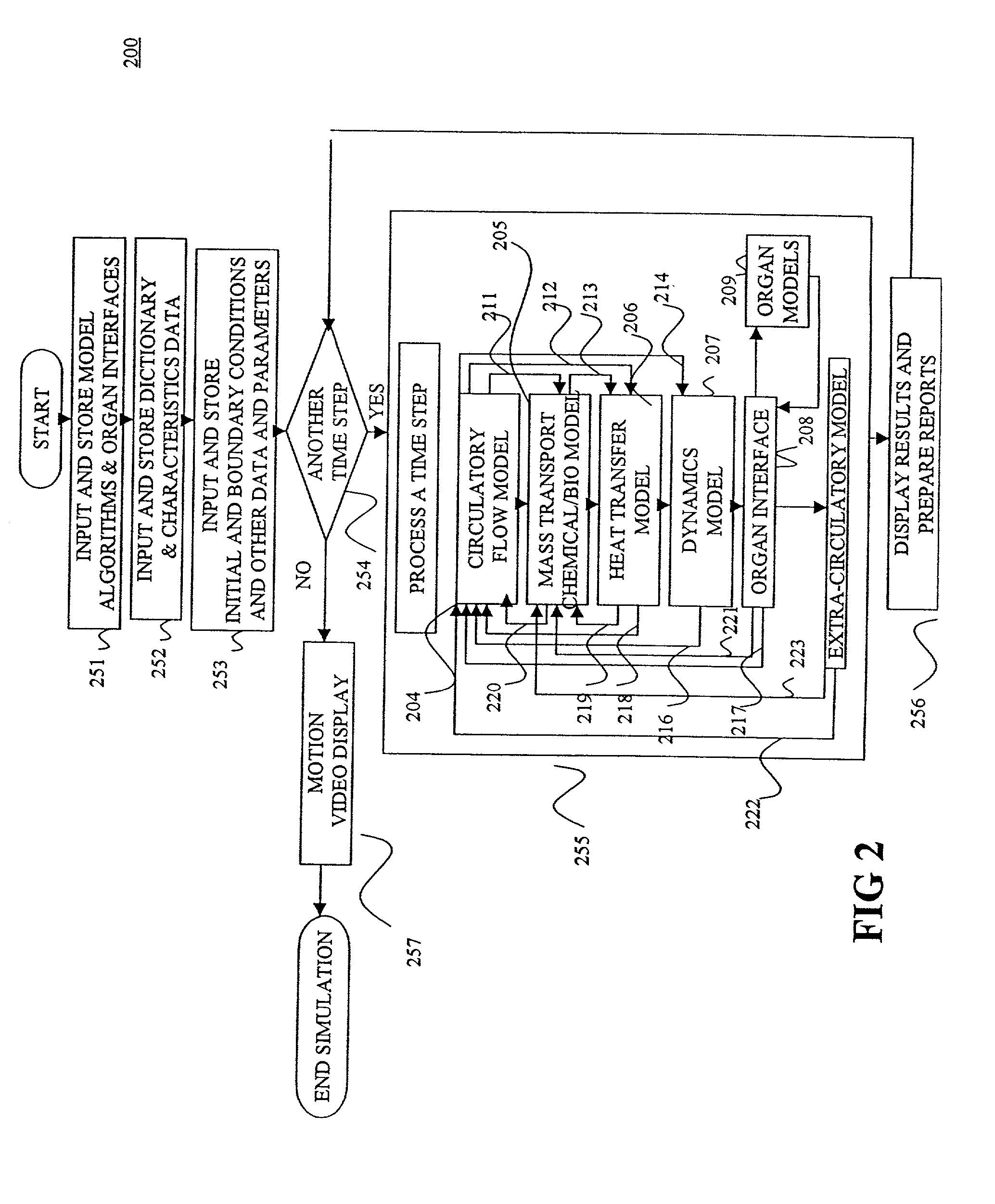Configurable bio-transport system simulator
a bio-transport system and simulator technology, applied in biological models, instruments, analogue processes for specific applications, etc., can solve the problems of inherently difficult to study, potentially life-threatening, and inconvenient use, and achieve the effect of being easily customizabl
- Summary
- Abstract
- Description
- Claims
- Application Information
AI Technical Summary
Benefits of technology
Problems solved by technology
Method used
Image
Examples
Embodiment Construction
[0051] The present invention provides for a system and method for simulating bio-transport dynamics of a bio-transport system, using the configurable simulation model. More specifically, the invention may be practiced to simulate the transport of fluids, energy, materials, chemicals and biologicals in any bio-transport system, such as, for example, a circulatory system, a lymphatic system, a gastro-intestinal tract, channel arrays formed by tissue such as fluid flow channels in the kidney and heart, and nutrient intake and protein production transport inside and among cells. The particular bio-transport system modeled need not be confined to humans, but may include those found in animals, insects, plants, and bacteria or any other organism.
[0052] The present invention and preferred embodiments are discussed below with respect to (I) the Overall System, (II) the Overall Process, and (III) the Models. For illustrative purposes, the human circulatory system is described in detail herei...
PUM
 Login to View More
Login to View More Abstract
Description
Claims
Application Information
 Login to View More
Login to View More - R&D
- Intellectual Property
- Life Sciences
- Materials
- Tech Scout
- Unparalleled Data Quality
- Higher Quality Content
- 60% Fewer Hallucinations
Browse by: Latest US Patents, China's latest patents, Technical Efficacy Thesaurus, Application Domain, Technology Topic, Popular Technical Reports.
© 2025 PatSnap. All rights reserved.Legal|Privacy policy|Modern Slavery Act Transparency Statement|Sitemap|About US| Contact US: help@patsnap.com



